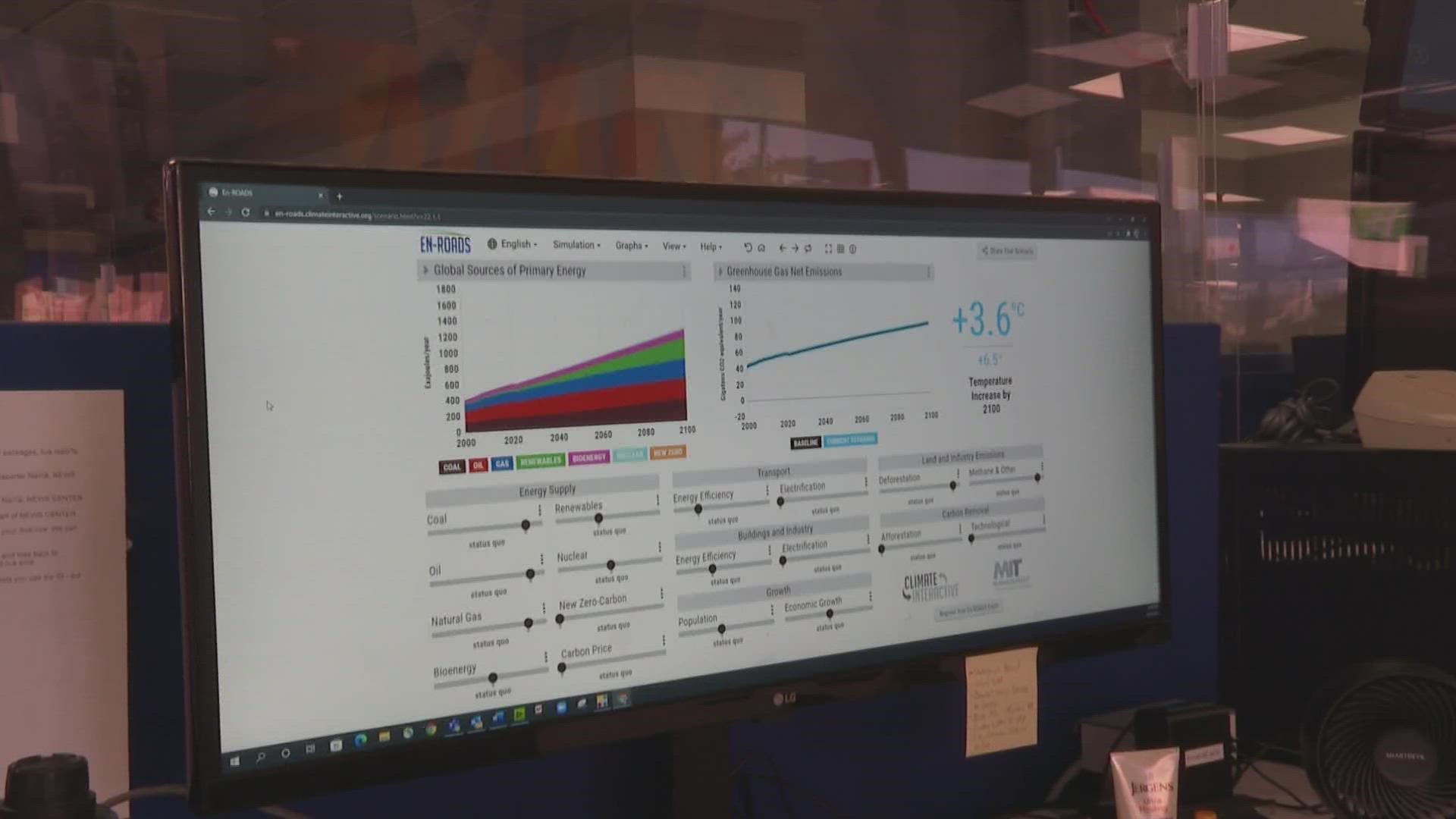PORTLAND, Maine — A group of Mainers is using a climate change simulator to try to envision realistic changes that can save our planet.
The program is called Energy-Rapid Overview and Decision-Support, or En-ROADS, and it's free to use online.
At the top of the page, users can find a colorful graph measuring "global sources of primary energy," next to another graph showing the upward trajectory of the Earth's temperature between the years 2000 and 2100. There are 18 sliders beneath the graphs, coded to real-world situations, each with an impact on Earth’s temperature.
Think taxing fossil fuel suppliers will make a dent? Try it out and the graphs move.
Peter Dugas is a member of the Citizens Climate Lobby in Portland, Maine. He and his peers work to influence lawmakers to fight climate change. En-ROADS is vital to their work.
"We need policy that’s not only incentivizing the virtue, but also disincentivizing the bad stuff," Dugas said while shifting around the sliders.
En-ROADS was created at the Massachusetts Institute of Technology and launched by Climate Interactive.
The program is used by everyone from grade-school classes to the United Nations, as students and scientists alike attempt to predict how policy changes realistically affect Earth’s temperature, according to MIT Sloan School Professor John Sterman.
The data and algorithms in En-ROADS are so widely regarded, the program was used during the forming of the Paris Agreement.
John Sterman is an MIT professor who helped develop En-ROADS. He has hosted countless seminars and pitch meetings in classrooms and boardrooms alike. Instead of telling politicians and communities what to do with combat climate change, Sterman shows them En-ROADS and asks, “What do you want to do?”
"Here’s all these different policy levers that you can explore," he said. "What would you like to try first? And people learn a lot more from that experience than if we did a presentation."
Susana Hancock has sat in on her share of meetings, as well.
"How do we take science and turn it into policy? Affect the actual change?" she posed after Dugas showed us the program.
Hancock has traveled the world teaching people not just how to fight climate change but how to use language that convinces governments to fight a climate crisis.
She presented a Tedx Talk in Geneva, Switzerland last fall:
Hancock believes En-ROADS conveys a message most can understand.
"I think that’s where this is really powerful because you can see those impacts and it’s visual, and it speaks a language that meshes science and policy and art," she added.
NEWS CENTER Maine Meteorologist Keith Carson experimented with En-ROADS and agreed the program is useful and visually appealing, though he was concerned with who may log on.
"The only critique I’d have of the tool in general is that it probably takes a certain amount of engagement to even be interested in looking at these different scenarios," he said. "And, perhaps, people who are engaged enough are already really interested in solutions for climate change."
Hancock and Sterman continue to put En-ROADS in front of the unengaged, but there is hope for an engaged next generation.
Thea Dugas, 12, is Peter’s daughter. From across their house, she spent much of the pandemic listening to Peter's Zoom presentations on climate change.
"I feel kind of bad because she has memorized most of my presentation," Peter joked.
Thea latched onto En-ROADS and has led a youth group to get business support for climate action. She said anyone can make a difference. It might just start with a mouse click.
"You don’t really need to do much," she said. "You can just get involved and get some friends."

